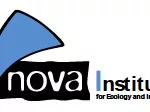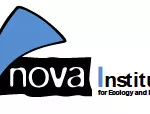
The United States Fashion Industry Association (USFIA) just released the tenth annual Fashion Industry Benchmarking Study, a survey of 30 executives from leading textile, apparel, and fashion brands, retailers, importers, and wholesalers, with their views on trade policy, sourcing costs, and the five-year outlook for the industry.
The study, authored by Dr. Sheng Lu, Associate Professor in the University of Delaware’s Department of Fashion & Apparel Studies, has presented the study results, including some of the key trends and how they impact global business.
Key findings of this year’s report:
#1 U.S. fashion companies are deeply concerned about the deteriorating U.S.-China bilateral relationship and plan to accelerate “reducing China exposure” to mitigate the risks.
- Respondents identified “Finding a new sourcing base other than China” as a more prominent challenge in 2023 than the previous year (i.e., 4th in 2023 vs. 11th in 2022).
- This year, over 40 percent of respondents reported sourcing less than 10 percent of their apparel products from China, up from 30 percent of respondents a year ago and a notable surge from only 20 percent in 2019. Similarly, a new record high of 61 percent of respondents no longer use China as their top supplier in 2023, up from 50 percent of respondents in 2022 and much higher than only 25-30 percent before the pandemic.
- Nearly 80 percent of respondents plan to reduce apparel sourcing from China over the next two years, with a record high of 15 percent planning to “strongly decrease” sourcing from the country. This strong sentiment was not present in past studies. Notably, large-size U.S. fashion companies (with 1,000+ employees) that currently source more than 10 percent of their apparel products from China are among the most eager to de-risk.
#2 Tackling forced labor risks in the supply chain remains a significant challenge confronting U.S. fashion companies in 2023.
- “Managing the forced labor risks in the supply chain” ranks as the 2nd top business challenge in 2023, with 64 percent of respondents rating the issue as one of their top five concerns.
- Most surveyed U.S. fashion companies have taken a comprehensive approach to mitigating forced labor risks in the supply chain. Three practices, including “asking vendors to provide more detailed social compliance information,” “attending workshops and other educational events to understand related regulations better,” and “intentionally reducing sourcing from high-risk countries,” are the most commonly adopted by respondents (over 80 percent) in response to forced labor risks and the UFLPA’s implementation.
- Since January 1, 2023, U.S. Customs and Border Protection (CBP)’s UFLPA enforcement has affected respondents’ importation of “Cotton apparel products from China,” “Cotton apparel products from Asian countries other than China,” and “Home textiles from China.”
- U.S. fashion companies are actively seeking to diversify their sourcing beyond Asia to mitigate the forced labor risks, particularly regarding cotton products.
#3 There is robust excitement about increasing apparel sourcing from members of the Dominican Republic-Central America Free Trade Agreement (CAFTA-DR).
- CAFTA-DR members play a more significant role as an apparel sourcing base this year. Over 80 percent of respondents report sourcing from CAFTA-DR members in 2023, a notable increase from 60 percent in the past few years. Also, nearly 30 percent of respondents placed more than 10 percent of their sourcing orders with CAFTA-DR members this year, a substantial increase from only 19 percent of respondents in 2022 and 10 percent in 2021.
- About 40 percent of respondents plan to increase apparel sourcing from CAFTA-DR members over the next two years. Most respondents consider expanding sourcing from CAFTA-DR as part of their overall sourcing diversification strategy.
- With U.S. fashion companies actively seeking immediate alternatives to sourcing from China and Asia, respondents emphasize theincreased urgencyof improving textile raw material access to promote further U.S. apparel sourcing from CAFTA-DR members. “Allowing more flexibility in sourcing fabrics and yarns from outside CAFTA-DR” was regarded as the top improvement needed.
#4 US fashion companies demonstrate a solid dedication to expanding their sourcing of clothing made from recycled or other sustainable textile fibers:
- Nearly 60 percent of respondents say at least 10 percent of their sourced apparel products already use recycled or other sustainable textile fibers. Another 60 percent of surveyed companies plan to “substantially increase sourcing apparel made from sustainable or recycled textile materials over the next five years.”
- Addressing the higher sourcing costs and the low-profit margins are regarded as the top challenge for sourcing clothing using recycled or other sustainable fiber.
- About 60 percent of respondents also call for policy support for sourcing clothing using recycled or other sustainable textile materials, such as preferential tariff rates and guidance on sustainability and recycling standards.
#5 Respondents strongly support and emphasize the importance of the early renewal of the African Growth and Opportunity Act (AGOA) and extending the program for at least another ten years.
- Respondents sourcing from AGOA members are typically large-scale U.S. fashion brands or retailers (with 1,000+ employees). Generally, these companies treat AGOA as part of their extensive global sourcing network and typically source less than 10 percent of the total sourcing value or volume from the region.
- About 40 percent of respondents view AGOA as “essential for my company to source from AGOA members.”
- About 60 percent of respondents say the temporary nature of AGOA “has discouraged them from making long-term investments and sourcing commitments in the region.” Many respondents expect to cut sourcing from AGOA members should the agreement is not renewed by June 2024.
- About one-third of respondents currently sourcing from AGOA explicitly indicate, “Ethiopia’s loss of AGOA eligibility negatively affects my company’s interest in sourcing from the entire AGOA region.” In comparison, only about 17 percent of respondents say they “have moved sourcing orders from Ethiopia to other AGOA members.
Other topics covered by the report include:
- 5-year outlook for the U.S. fashion industry, including companies’ hiring plan by key positions
- The competitiveness of major apparel sourcing destinations in 2023 regarding sourcing cost, speed to market, flexibility & agility, and compliance risks (assessed by respondents)
- Respondents’ qualitative comments on the prospect of sourcing from China and “re-risk”
- U.S. fashion companies’ latest social responsibility and sustainability practices related to sourcing
- U.S. fashion companies’ trade policy priorities in 2023
This year’s top trend
While China remains the major supplier to the U.S. market, they are no longer a dominant supplier. This finding tracks with the American Chamber of Commerce in China’s 25th annual China Business Climate Survey report. The AmCham China report found that, for the first time, companies are less willing to invest in China and China’s strategic priority is declining.
So, if China is no longer a dominant supplier in the U.S., who is challenging them?
Türkiye is the new top supplier of U.S. fabric imports, with a 15% share by quantity. China ranks as the number two supplier, shipping 13% of U.S. fabric imports by quantity.
If there is a success story from the COVID-19 pandemic, it’s the Turkish textile and apparel industry’s agility, allowing it to meet the nearshoring and flexibility in production with no-stock that the “new normal” required of the global apparel supply chain. U.S. imports from Türkiye grew rapidly during the pandemic, going from the tenth largest supplier of textiles and apparel in 2020 to the sixth largest in 2021 and now the third largest in 2022.
USFIA’s Sourcing Partner, Istanbul Apperal Exporters’ Associasion (IHKIB), also shared the priorities for the Turkish apparel industry in 2022 and 2023. Here’s what they had to say:
| The Turkish apparel industry is also far ahead of its competitors in many areas including sustainability and an eco-friendly approach to production. Now, with the announcement of the European Green Deal, another traditional competitive feature of the industry will fit to the emerging sustainable global apparel supply chain: good-quality durable apparel goods with less resource-consuming, but still stylish, materials!
The apparel industry of Türkiye has recently announced the roadmap towards sustainability and green production, including digitalization and the establishment of a circular supply chain in apparel with our esteemed international partners. All the efforts of the industry are to increase the added value in production, the sustainable design and fashion capability of the industry, and rise the unit export price in apparel exports. |
Background
This year’s benchmarking study was based on a survey of executives from 30 leading U.S. fashion companies from April to June 2023. The study incorporated a balanced mix of respondents representing various businesses in the U.S. fashion industry. Approximately 73 percent of respondents were self-identified retailers, 60 percent self-identified brands, and 65 percent self-identified importers/wholesalers.
The respondents to the survey included both large U.S. fashion corporations and medium to small companies. Around 77 percent of respondents reported having more than 1,000 employees. And the rest (23 percent) represented medium to small-sized companies with 100-999 employees.





